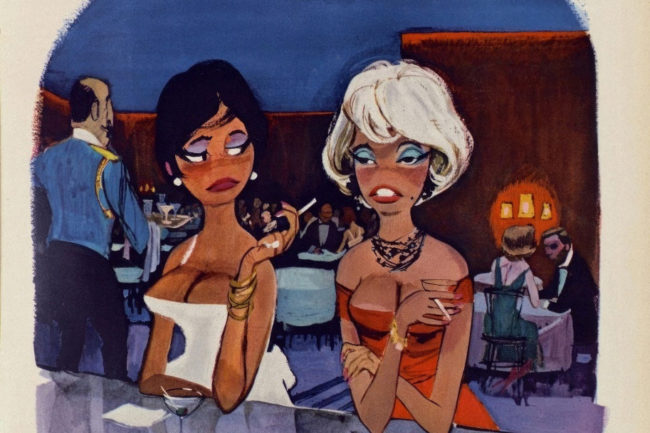'mario & Luigi: Brothership' Review: Good Combat And Great Visuals Aren't Enough

If you just watched someone play Mario & Luigi: Brothership for an hour or so, you might come away thinking it’s one of the best Switch games and/or RPGs of the year. Unfortunately, the game is much longer than an hour.
Brothership, the latest in the long-running brotherly RPG series starring Nintendo’s mascot and his idiot brother, has most of the component parts you need for an enjoyable adventure. The turn-based combat is as fun as ever, especially when paired with some of the most charming visuals ever in a 3D Mario game. It’s got a pretty solid set of build-crafting mechanics for a game aimed at a younger audience, too.
Combined with an endearing nautical setting, Brothership should be great — or at least really good. Unfortunately, it settles for something around “fine,” which still falls short of carrying it the distance.
Brotherhip says bon voyage to the Mushroom Kingdom, for better or worse
The latest Mario & Luigi adventure (which does not involve original series development studio AlphaDream, which closed in 2019) has a propulsive enough premise to keep the player going, at least for a while.
There’s not much to it: Everyone gets whisked away from the Mushroom Kingdom to a new place called Concordia. At some point in the recent past, Concordia was a big continent united by the power of the Uni-tree. Of course, some bad things happened and now Concordia is a series of disconnected, drifting islands in a giant ocean. Mario and Luigi must journey across Concordia, reconnecting each island to the Uni-tree to restore harmony.
Mario’s various role-playing adventures have generally favored charm and humor over serious, grandiose storytelling à la Final Fantasy — and Brothership is no different. The bulk of the game is spent going from one island to another, spending anywhere between 30 and 90 minutes solving whatever their quirky local problem happens to be, and reconnecting it to the big tree. Most of the islands have pun names, as do many of the characters and enemies you’ll fight. It’s goofy and often clever.
Unfortunately, that’s kind of where the charm ends, at least in the writing. Brothership isn’t anywhere near as witty and outright funny as previous series entries like Bowser’s Inside Story were. It tries, and is never aggressively unfunny or anything like that, but it’s just kind of … there. Much of the dialogue failed to elicit any kind of response in me.
To its credit, Brothership does try to tell a somewhat socially relevant story about the power of connection. Electricity is the aesthetic theme of the day here, with most of the NPCs either looking like living ports or connectors with legs. Everything you do is in the service of bringing a divided people back together, whether in the micro on each island, or in the macro across the entire adventure.
Unfortunately, it doesn’t dig too deep beyond the surface on any of that, and often feels like window dressing to justify having a bunch of enemies and NPCs who look like HDMI connectors. Nearly every friendly NPC in Concordia has a power outlet for a face, which is fun in theory, but in practice, it makes most of them look like interchangeable Funko Pops. They lack personality, broadly speaking.
Compared to the colorful cast of the recent Paper Mario: The Thousand-Year Door remake, it’s no contest.
That Mario & Luigi combat can still sing
Thankfully, Brothership is still a pretty good RPG at its core. The part where you fight enemies is fun, and that was almost enough for me. Almost.
Battles remain turn-based, as they always have been, and the basic premise of the older games still holds true here. Every attack involves both Mario and Luigi, so when they attack, they attack together. Every attack, from regular jump attacks to the more flashy Bros. Moves, requires timed button presses of some kind, and the same goes for dodging, defending, and countering enemy attacks.
This structure allows for two fundamental truths that keep the combat in Brothership engaging for most of its runtime. Watching Mario and Luigi do stuff together is really charming, and putting quick-time events in turn-based battles makes the proceedings feel just a bit more exciting. Stats don’t dictate whether an attack lands, you do.
All of these mechanics have been staples of previous Mario & Luigi games, so there’s nothing particularly novel here — even if they work well. Plugs do a lot to alleviate that problem. Eventually, a few hours too many into the game, you unlock the ability to craft and set plugs into a gradually expanding set of personal power outlets. Each plug has a different unique combat effect; one of them adds fire to every attack, while another automatically does quick-time events for you.
Each plug has a limited number of charges, and once those are depleted, it needs time to recharge. Once you’re deep enough into Brothership, this becomes pretty exciting. Hot-swapping plugs in and out during fights (blessedly, this doesn’t cost a turn) to fit each situation is tactically compelling. You have to consider which plugs you want to be active at the same time because there are hidden combos with bonus effects, too.
Juggling plugs wound up being the most fun part of Brothership for me, but it takes entirely too long (think 15 hours or so) to get to the point where you have an adequate number of both outlets and plugs to make this system work as intended.
Boss fights are also a highlight, though they also put a spotlight on one of Brothership’s shortcomings: There just aren’t enough of them. So many islands end with Mario and Luigi anticlimactically winning the day without any kind of dramatic confrontation at the end.
The really big, set-piece story boss fights are great, but I’d estimate there’s a single-digit number of those. What makes them cool is that they use “Luigi Logic,” a new mechanic that mostly manifests as ordering Luigi to smash boxes or hit switches outside of combat. In boss fights, though, Luigi Logic always opens up a unique, bespoke mechanic that can turn the fight on its head.
Here’s the problem: There’s not enough tactical depth to these. Picking the Luigi Logic action is always the right move when it’s available — and doing it right will always stun the boss, opening it up for huge damage. There’s no real consideration to be made about holding it for a big moment or anything like that. And again, this is something that happens far too infrequently in Brothership.
Still, once it starts hitting the right notes, the combat in Brothership does indeed become the best thing about the game. It’s just not without its flaws.
But this adventure asks too much of the combat
It’s problematic, then, that most of the stuff outside the combat ain’t great.
When you’re not fighting enemies, you’re most likely running around a series of relatively small islands that each have their own little stories to tell. Sometimes, you’re helping a star dancer find the right hair wax to keep his groove going, and other times, you’re helping a tribe of ice people become friends with a tribe of fire people.
But in practice, this usually means running to the next objective indicator while fighting enemies and solving relatively simple puzzles along the way. I do dig that Brothership plays more like a simple puzzle-platformer outside of combat than a traditional RPG. Generally speaking, the flow of fighting and puzzle solving is inoffensive, and at times, it’s actively pretty interesting.
The real downfall lies in the side quests. There are a decent number of these peppered throughout the game, and aside from "Very Important" ones that the game marks with red text, almost none of them are really worth doing. They almost all involve going back to some island you’ve already cleared out, talking to one or two people, maybe fighting an enemy, and then getting healing items as a reward.
If you really like Concordia’s characters, maybe that’s enough for you. Over time, though, it becomes tedious, especially in the instances when you have to manually sail somewhere. Sailing is not mechanically dense in Brothership whatsoever, as it mostly involves opening a map and clicking on where you’d like to go. The ship navigates itself very slowly by default, or very quickly if you optionally turn on fast sailing.
The idea, as explicitly stated by the game, is for you to set a destination and then go do other stuff for a while as your boat slowly makes its way over there. This would be fine if the side quests were interesting, but by and large, they are not. On a practical level, you’ll spend a lot of time turning on fast sailing and just staring at the map until your ship gets to its destination.
Wind Waker, this is not.
Last and certainly not least, with regards to gameplay, Brothership is just too long. The runtime can exceed 30 hours and probably a decent amount more if you feel like doing everything, but it runs out of tricks around hour 20.
Brothership is one of the best-looking Mario games
This Mario & Luigi game might lack charm in its characters and writing, but the visuals almost make up for that.
Simply put, these are the most charming 3D renditions of Mario and Luigi I can remember. Most of Brothership’s world is lovingly rendered in the style of the old Game Boy Advance Mario & Luigi box/instruction manual art, with flat, solid colors and black outlines around everything. It looks like a polygonal cartoon, and both Mario and Luigi move around the world in exceedingly charming ways. Their proportions bend and stretch during battle animations, and these are by far the most expressive faces the two brothers have ever had.
One caveat, though: Performance isn’t great. The Switch is showing its age because this game occasionally chugs below its 30 frames per second target, even at times when there’s not much going on. Combat is mostly safe from this, at least.
The audio presentation is solid, too, if not quite as spectacular. Most of the music is brassy and jaunty, as one would expect from a modern Mario game. Very little (if any) of it will stick around in my brain for long, but that’s fine. I also enjoy that Mario and Luigi speak to people in fake Italian-sounding gibberish, which I’m pretty sure would get Nintendo canceled if it were done with almost any other language on Earth.
Is Mario & Luigi: Brothership worth getting?
I suspect where a given individual lands on Brothership will have a lot to do with how they feel about previous Mario & Luigi games.
If you’ve never played one, this could be a good starting point. Brothership’s brotherly combat is a real highlight, something that’s consistent across the whole series. Good combat and great visuals will likely be enough to hold your interest. I feel that it overstays its welcome, but you might not.
But anyone with any reverence for previous entries like Superstar Saga and Bowser’s Inside Story may feel like this is a case of too little, too late from Nintendo. Brothership is the first new game in this series in nearly a decade, and in some respects, it’s one of the worst. That doesn’t make it a bad game, but it’s merely OK, and by the standards of its predecessors, that’s not good enough.
Mario & Luigi: Brothership launches exclusively on Nintendo Switch on Nov. 7.


